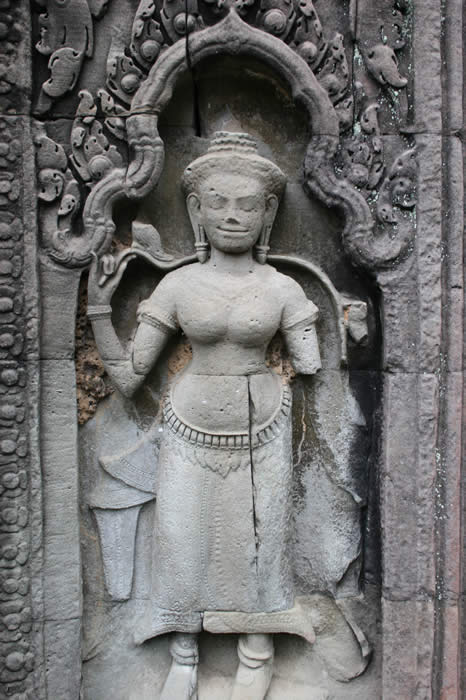and surrounding areas a series of photographs by Lee van Laer Located in Siem Reap, Cambodia, Angkor Wat is one of the world's largest temple complexes. The surrounding area has many thousands of related structures, representing one of the most densely populated lost civilizations in the world. Having left few written records, and few reports from outside societies about their activities or culture, it has been left to later civilizations to interpret what they can from the ruins. Angkor society displayed a world-class mastery of architecture, engineering, agriculture, water management, stonework and sculpture. Their ceremonial buildings contain some of the richest legacy of religious symbolism in the world. The intention of this web site is to introduce readers to a visual impression of the area. Links are provided for those who want to read about it in more detail. |
Angkor Thom, the Elephant Terrace, Bayon, and surrounding area |
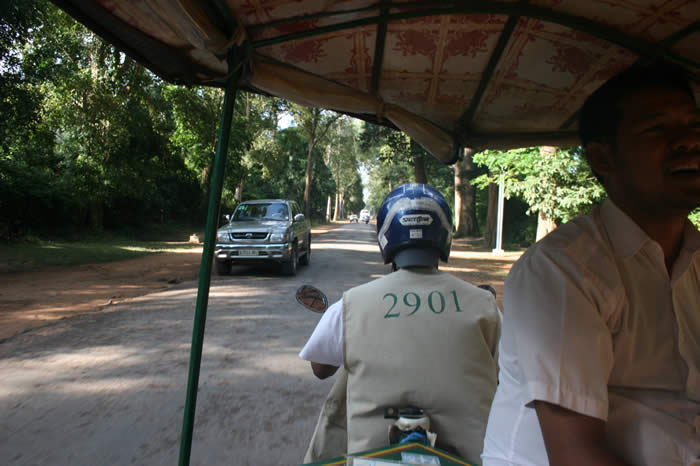 |
Heading out in the morning towards the ruins on a tuk-tuk. |
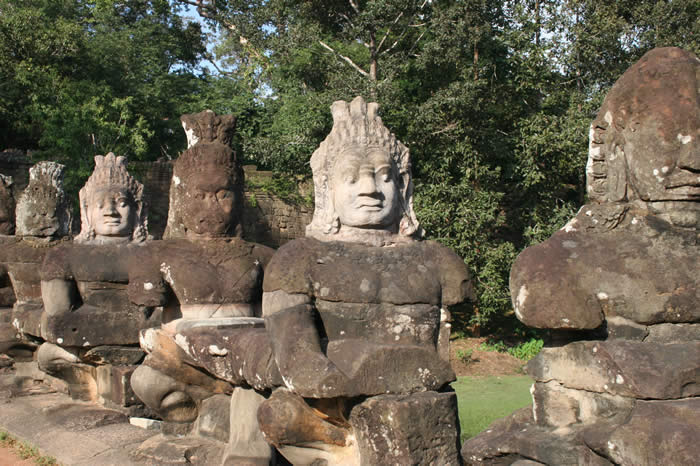 |
Asuras in a row along the balustrade leading to one of the gates at Angkor Thom. This depicted the churning of the sea of milk. The naga bridge was a link between men and heaven; a reference to esoteric kundalini yoga practices. Some of the original statues have been replaced by replicas due to the deterioration of the originals, which have been moved to museums or storage facilities. |
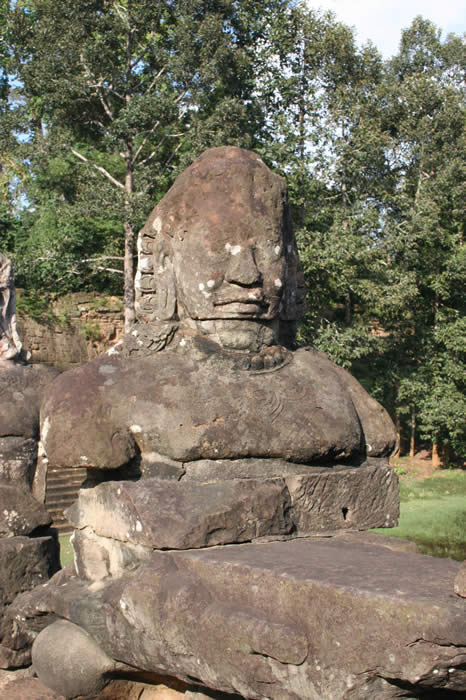 |
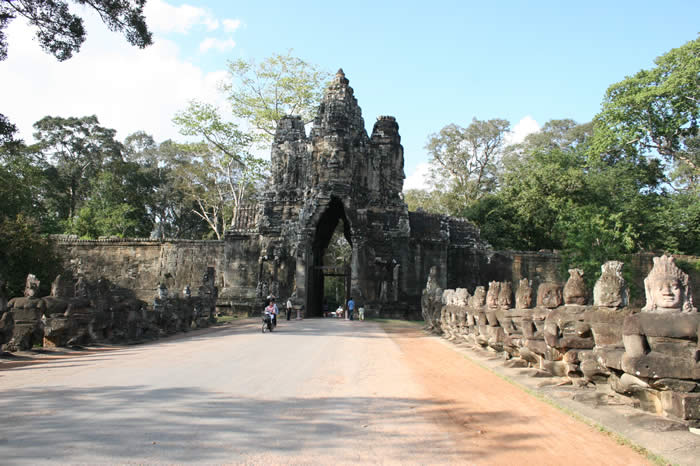 |
The gate |
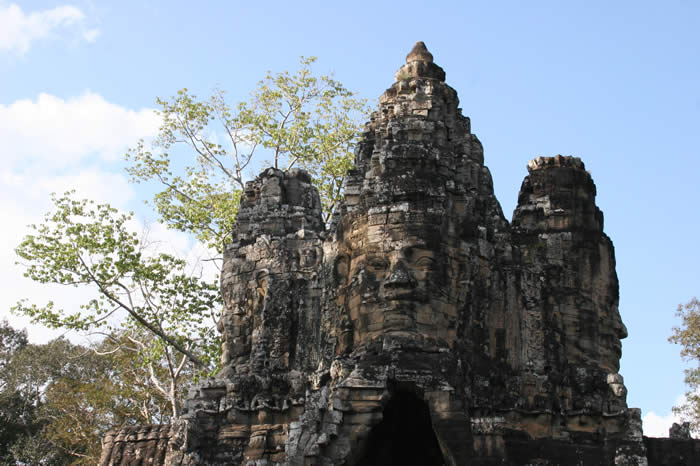 |
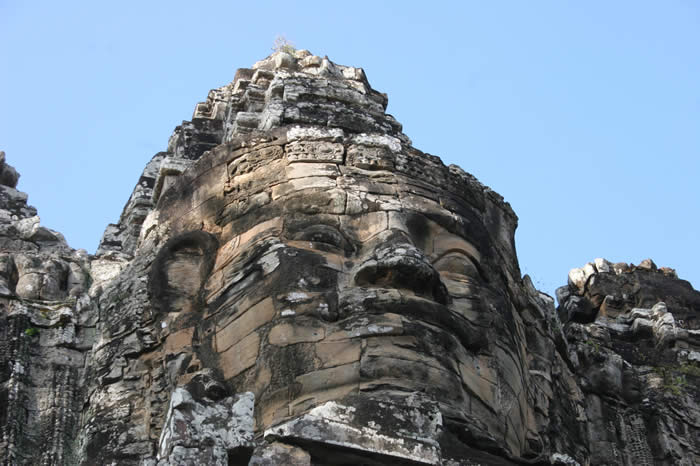 |
Massive stone heads are found throughout the Angkor temple complexes. |
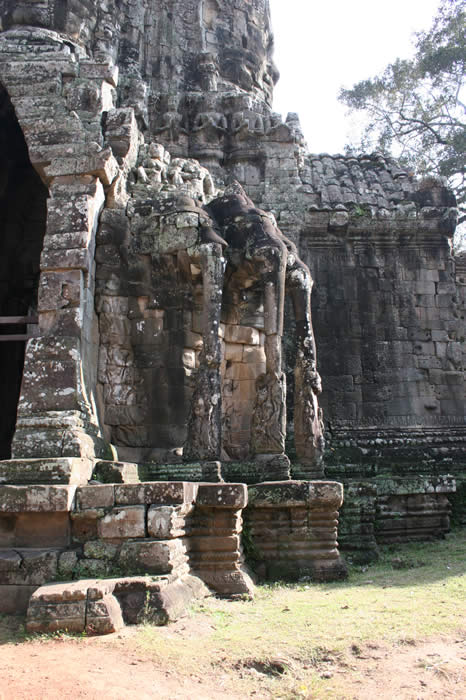 |
Another common motif- a trio of elephants at the base of the gate. |
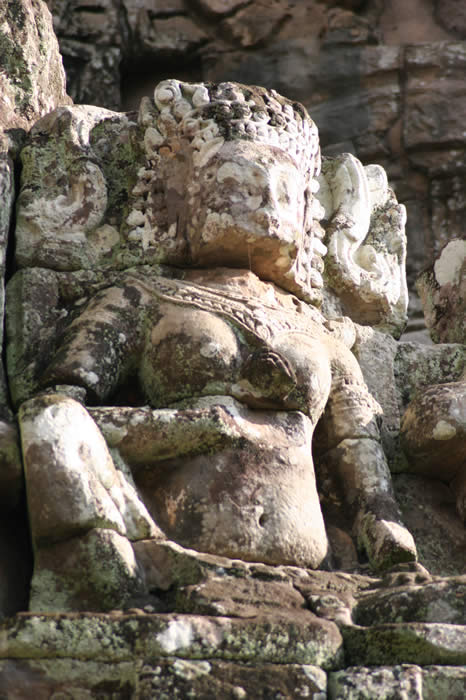 |
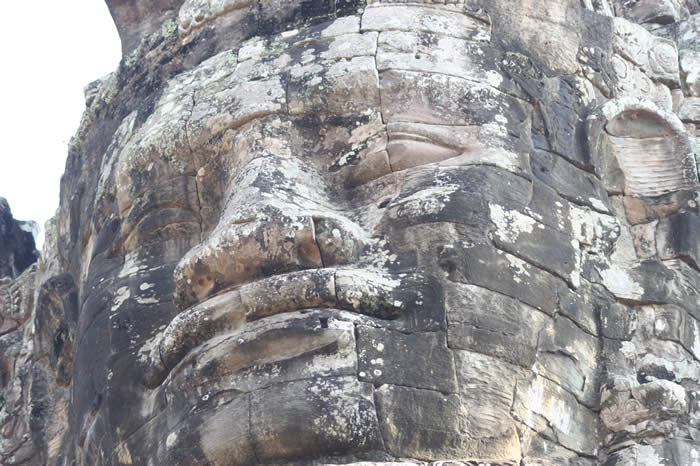 |
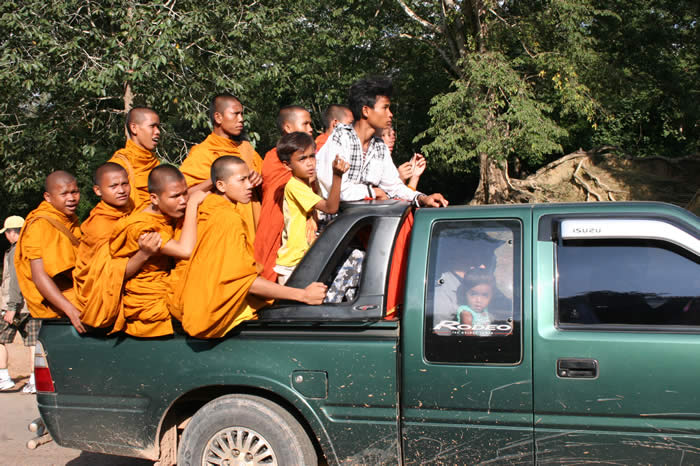 |
A truckload of young monks touring the ruins. |
 |
Another gate |
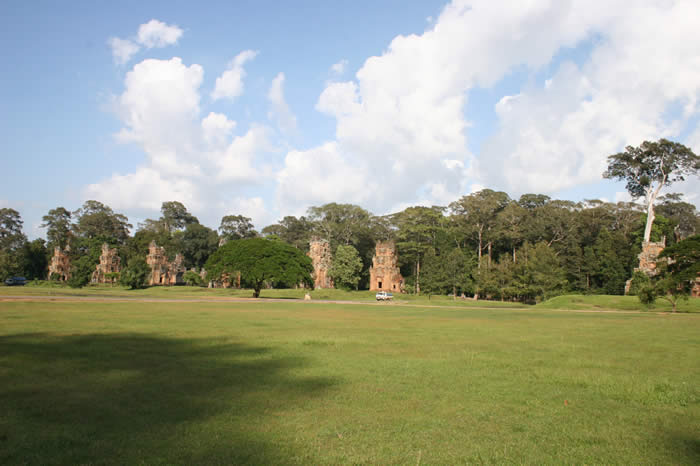 |
The elephant terrace, a parade ground for royal receptions and events, features a large grassy expanse. |
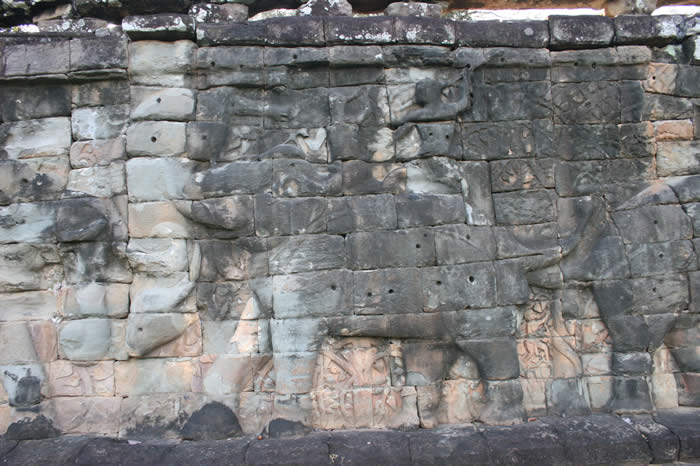 |
Some of the elephant imagery on the elephant terrace. |
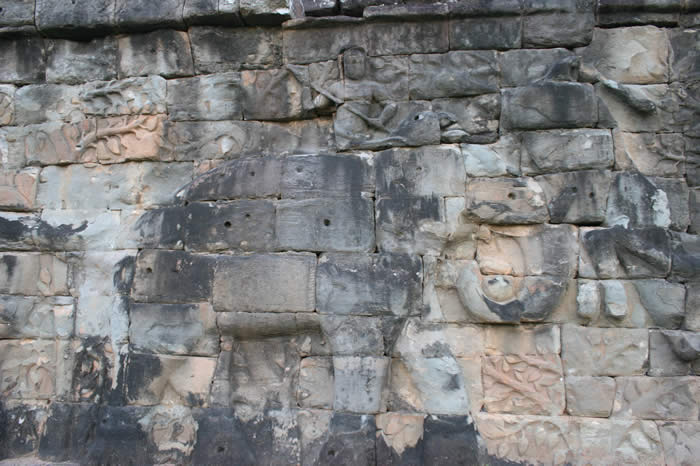 |
Elephant with rider |
 |
Elephants with trunks dangling in the form of columns |
 |
A detail of one of the elephants. The effects of a thousand years of exposure to the elemnts are apparent. |
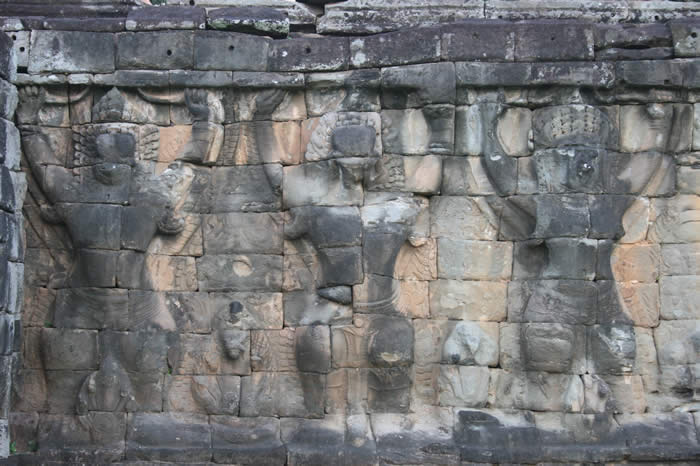 |
Supports for the dais are in the form of Garuda. |
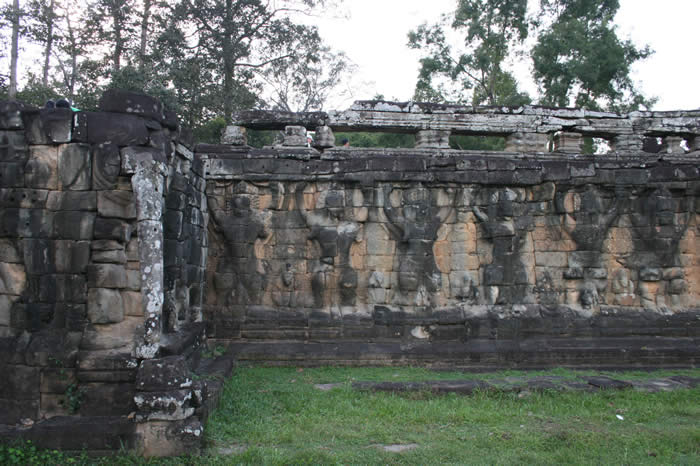 |
It may be that this was meant to indicate the elevated status of royal personages seated in the viewing areas. |
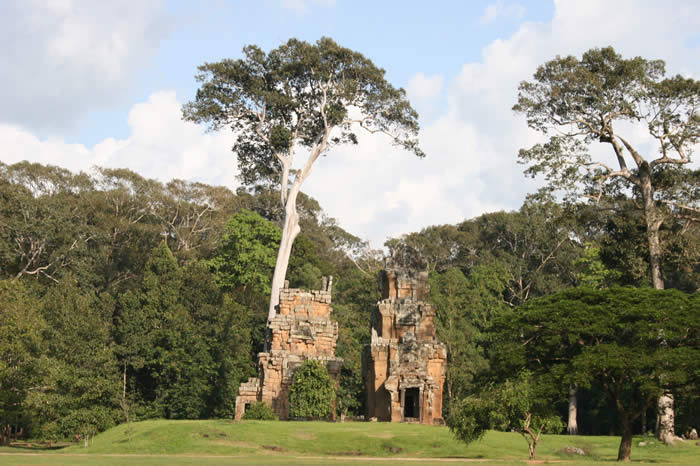 |
Small outlying buildings. |
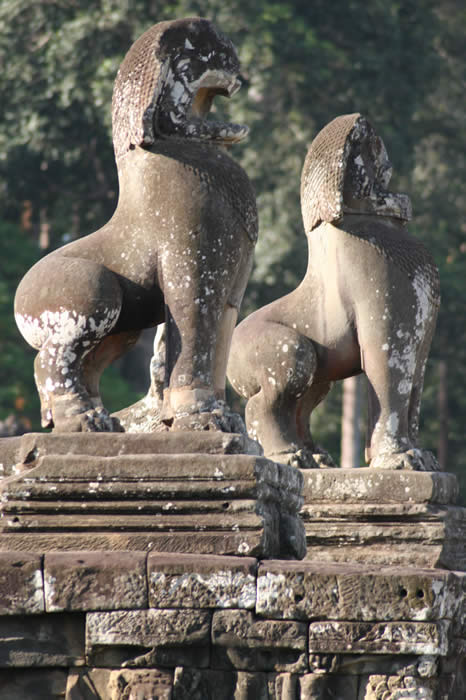 |
Lions |
 |
Bas relief from the terrace area |
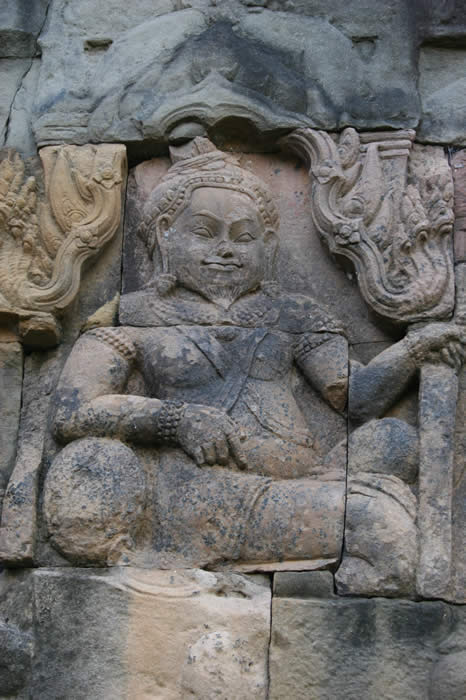 |
Possibly the image of a king |
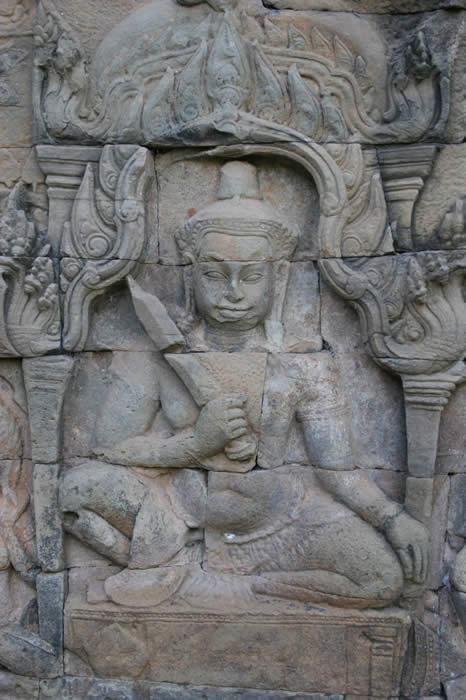 |
Another regal figure |
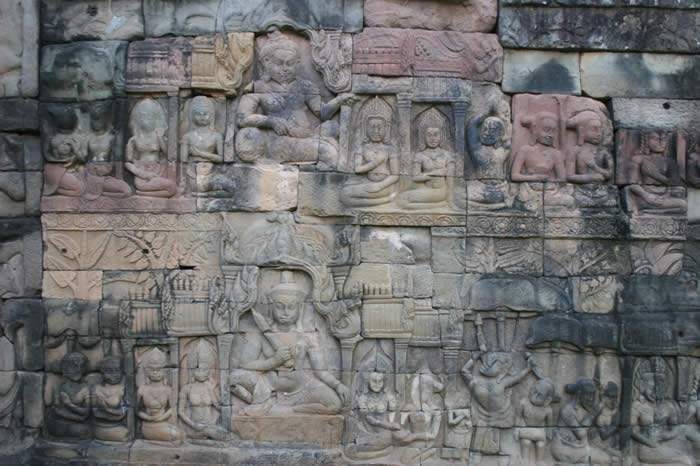 |
The figures in context, surrounded by courtiers |
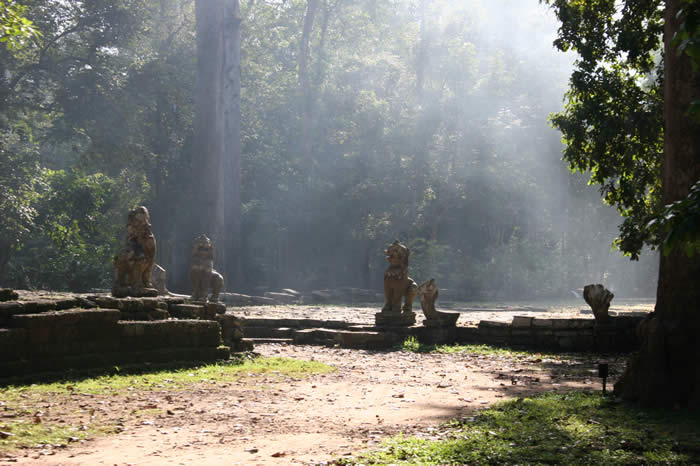 |
An atmospheric collection of lions, as seen early a.m. |
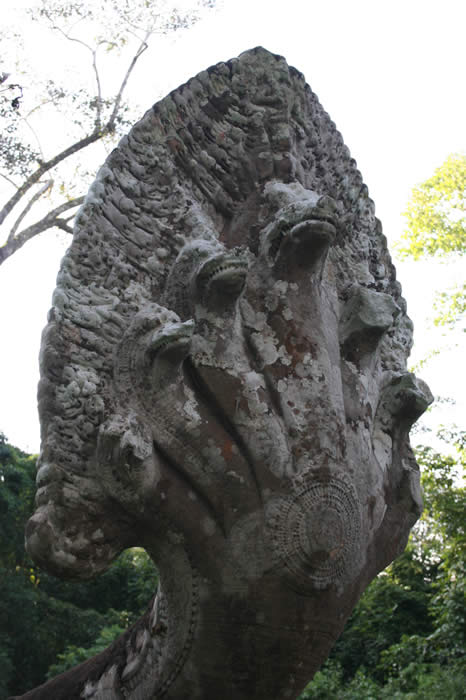 |
Naga balustrades near Preah Palilay are exceptionally fine. Note the circular chakra element on its chest, and the seven heads, representing the yogic chakra system. |
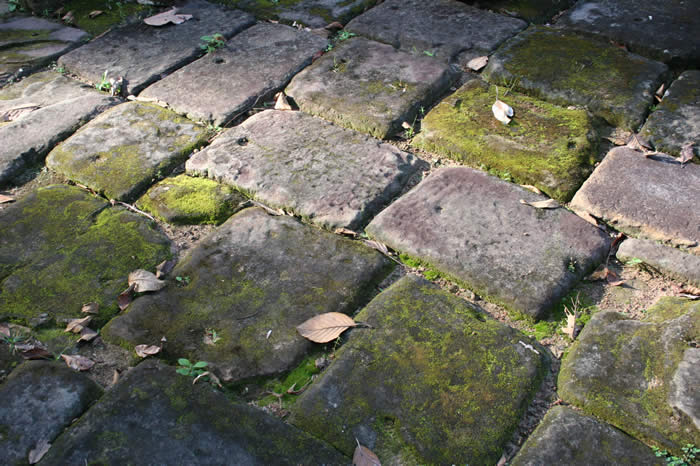 |
Paving stones still in place after 1,000 years |
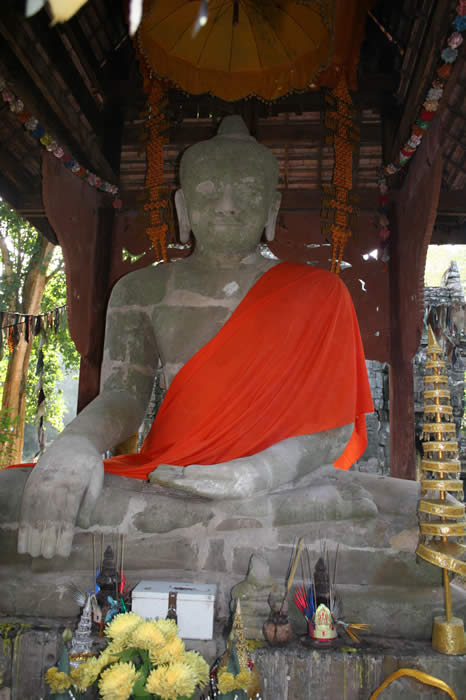 |
Tep Pranam. An ancient Buddha statue, considerably restored, with offerings. |
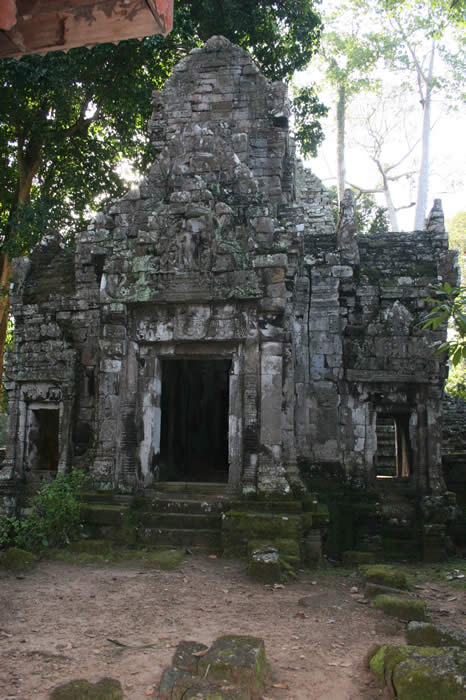 |
Small temple structures abound. |
 |
The small temple of Preah Palilay, from the 13th or 14th century, sports several trees. It has a unique combination of both Hindu and Buddhist imagery. Typically, during periods of Hinduism, Buddhist imagery was destroyed. Why this did not take place here is unexplained. |
 |
Images of praying figures everywhere emphasize the central role religious practice played in Angkor culture. |
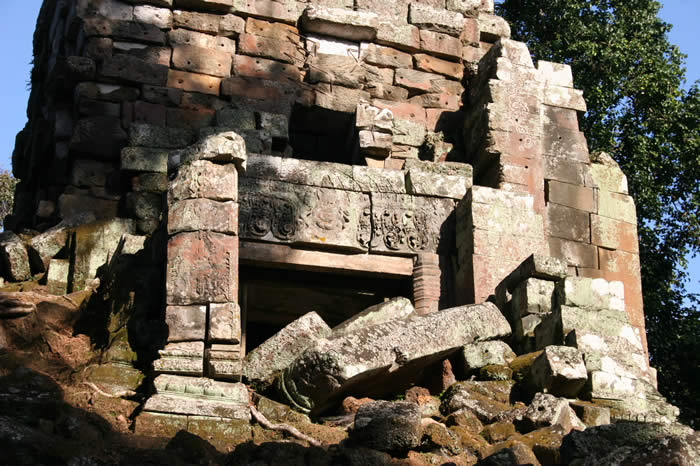 |
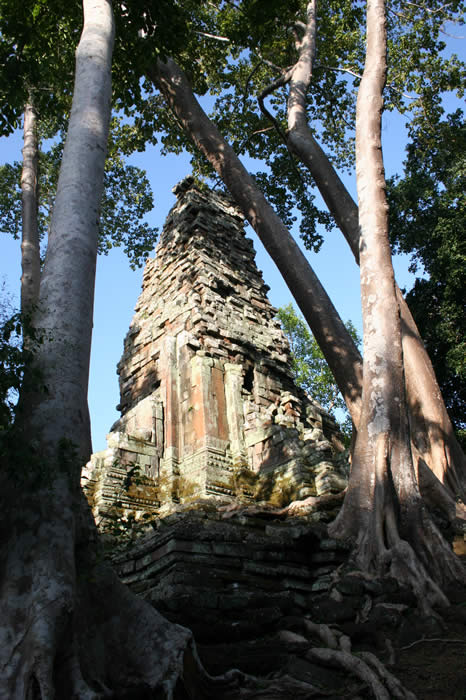 |
Another view of Preah Palilay. |
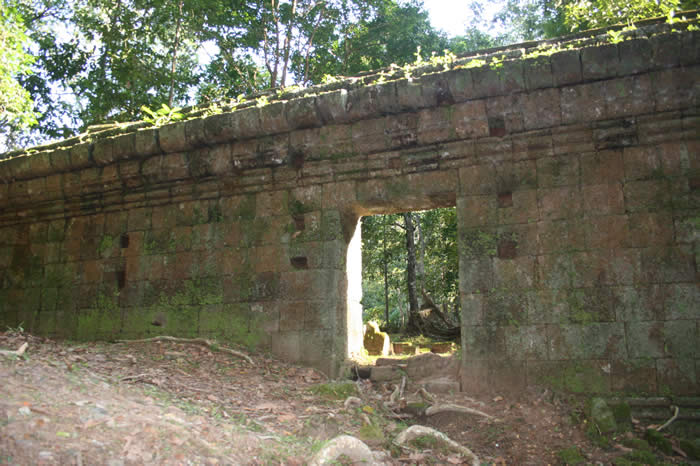 |
Sunken walls hint at how much is still hidden beneath the ground around Angkor. |
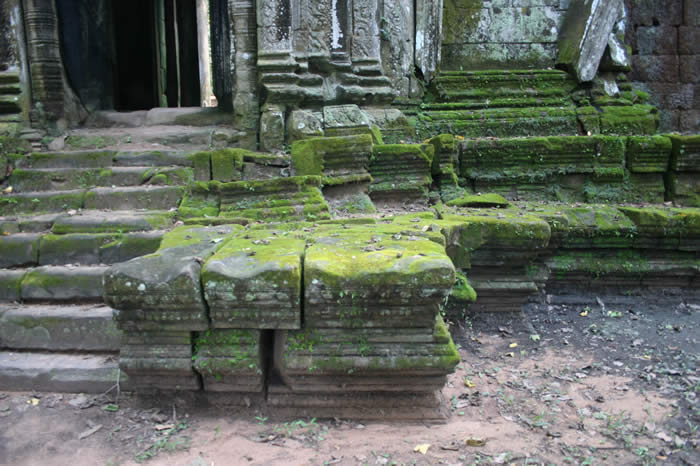 |
In many areas, there's abundant shade. Moss-covered stones soften the visual impression of ruins. |
 |
Miniature representations of temples on the corners of temples is a recurring motif. This practice suggests a fractal cosmological understanding: "as above, so below." |
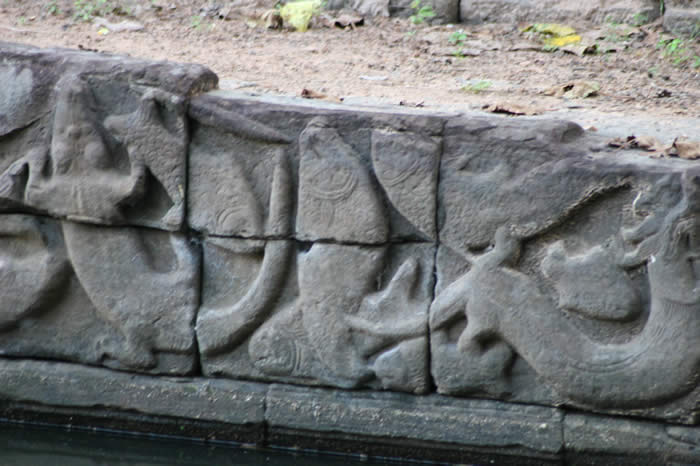 |
Given Angkor's cultural relationship with managed water resources, frequent carved images of fish and crocodiles come as no surprise. |
 |
The large pond near Phimeanakas and the royal palace. The king may have watched water sports here. |
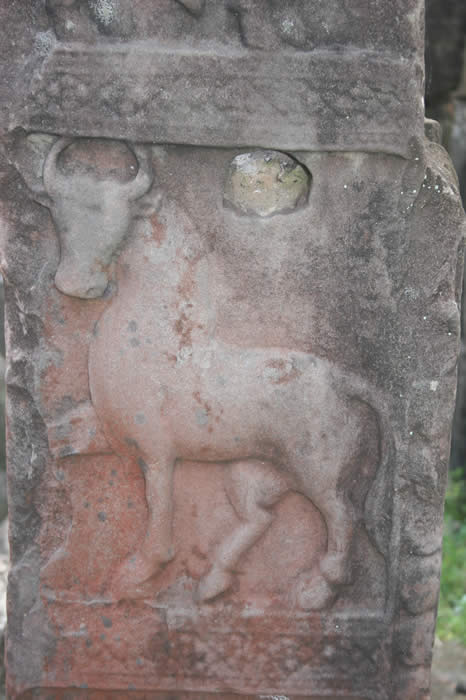 |
cattle imagery on a doorjamb |
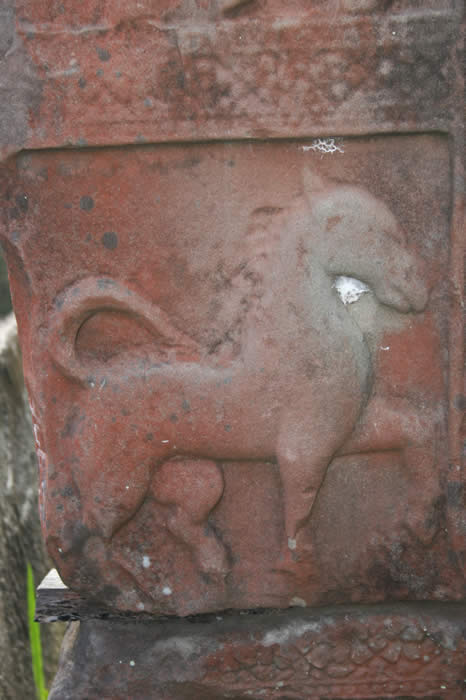 |
A horse |
This complex temple structure, first built starting around 1200 A.D., is the state temple of Jayavarman VII. The enigmatic stone heads around the temple towers are by turns brooding, evocative, and myesterious. The exact number of faces present is in dispute, as some of the original 49 towers have been destroyed. the temple is maze-like and encourages a rambling exploratory visit. |
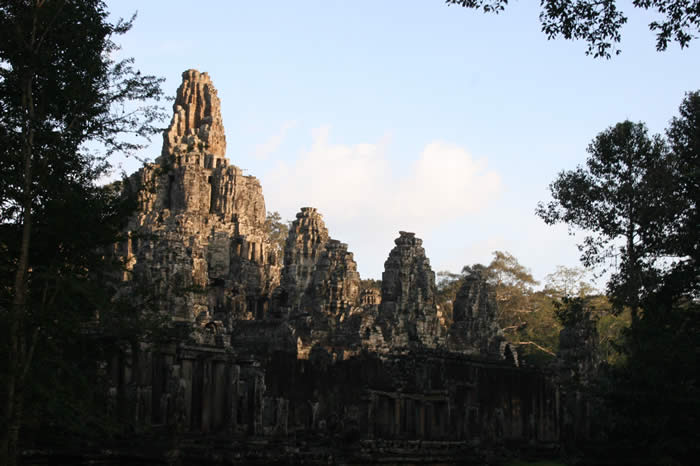 |
Bayon, seen from a distance. The massive stone heads are difficult to distinguish. |
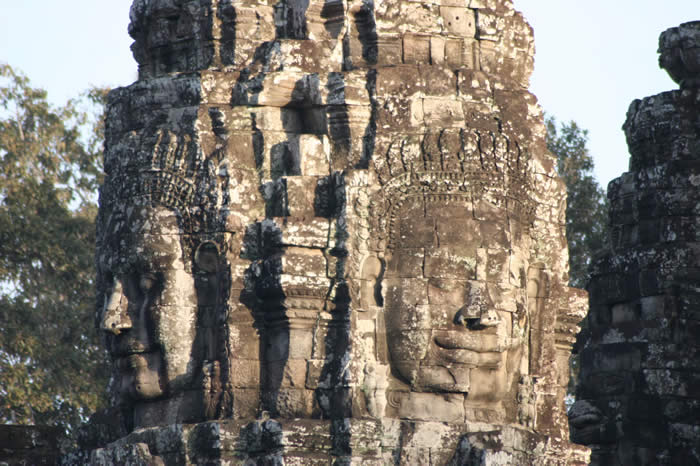 |
An initial view of the heads. |
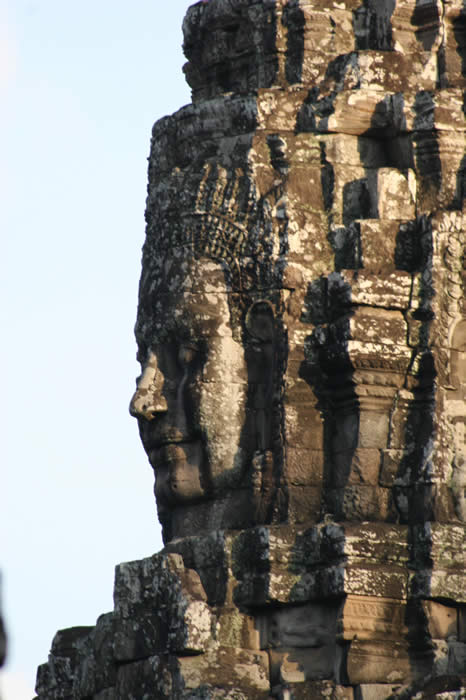 |
One of the 'classic" views. |
 |
An impression of many heads on the towers. |
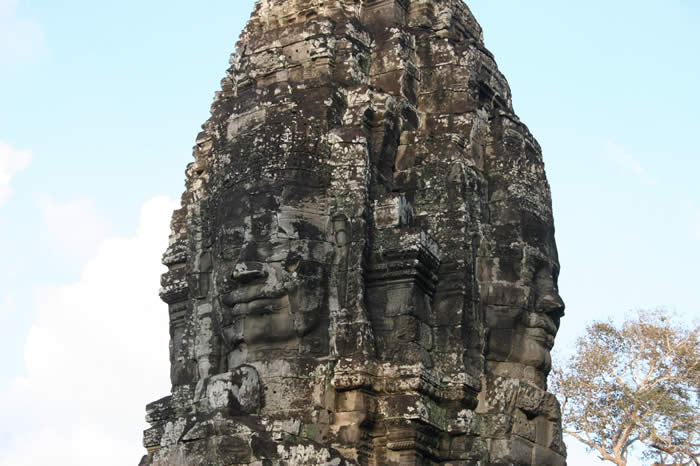 |
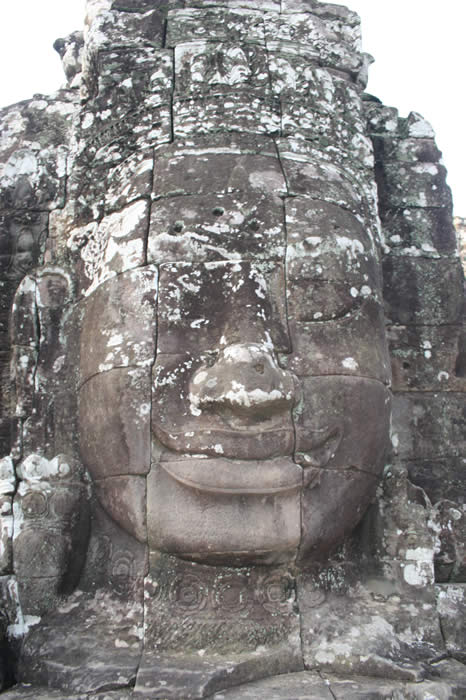 |
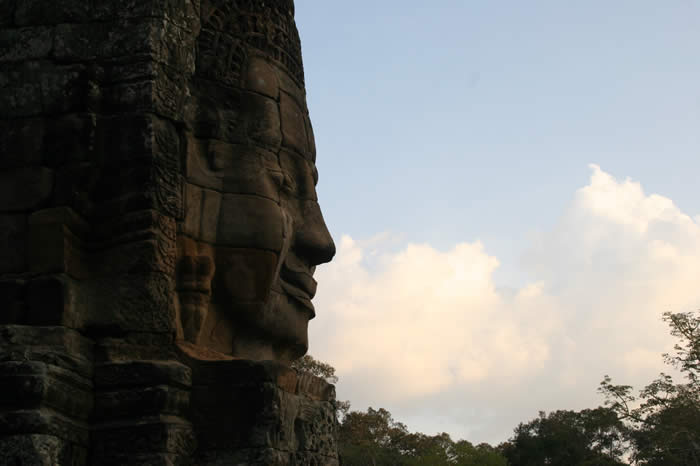 |
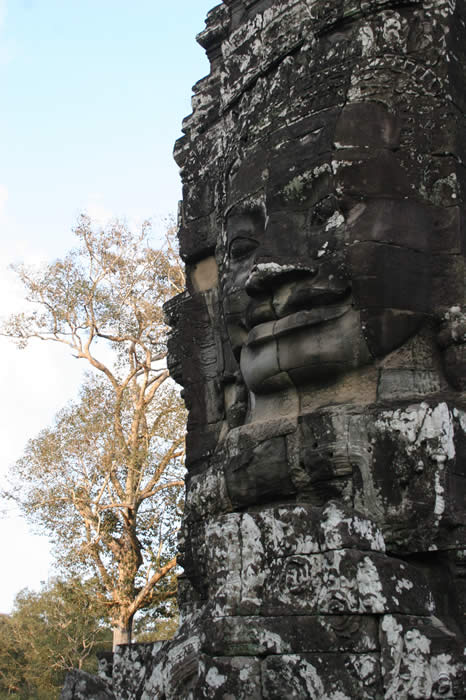 |
 |
Some sculptural details. Odds are these bas reliefs once supported far more detail. |
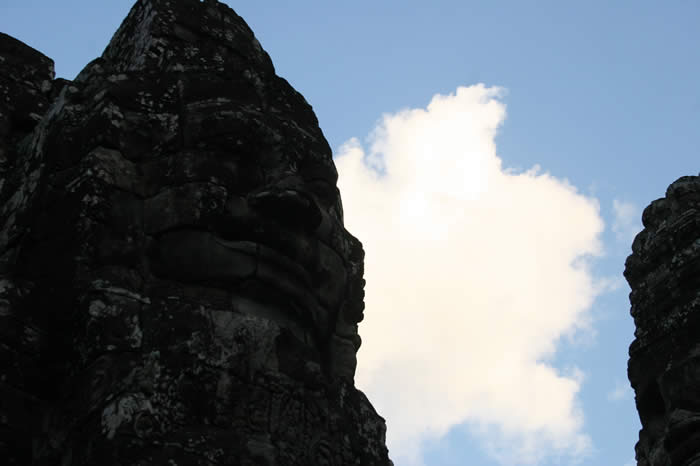 |
As twilight arrives, the hads slowly fade into darkness. |
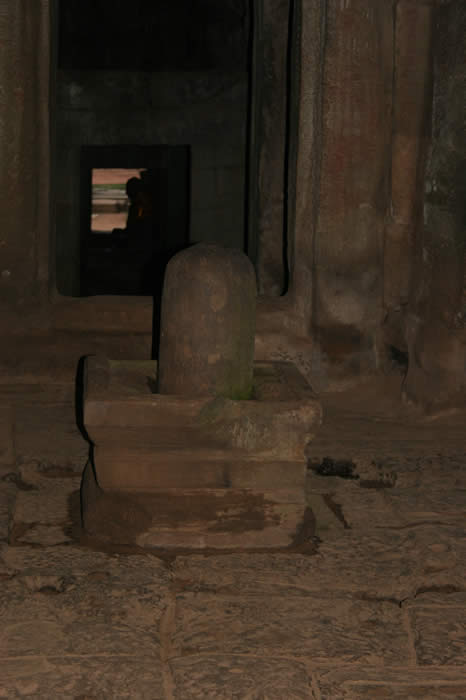 |
A linga of unknown age lurks within the temple. |
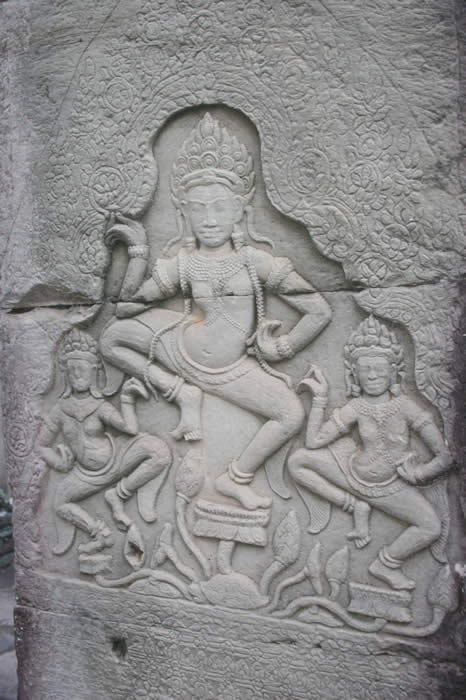 |
Some superior images of Apsaras can be found within the temple areas. |
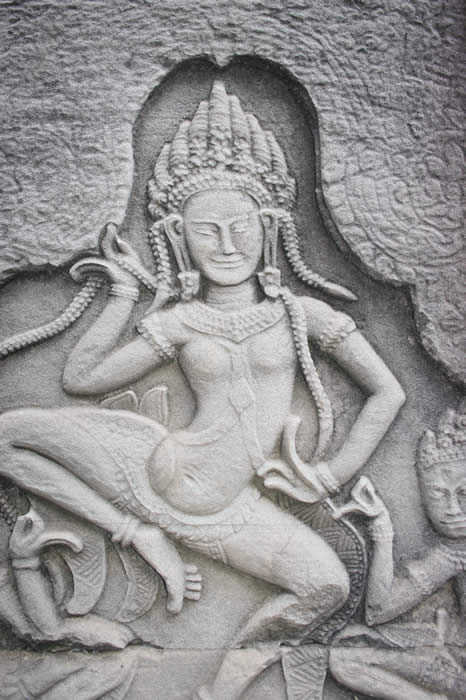 |
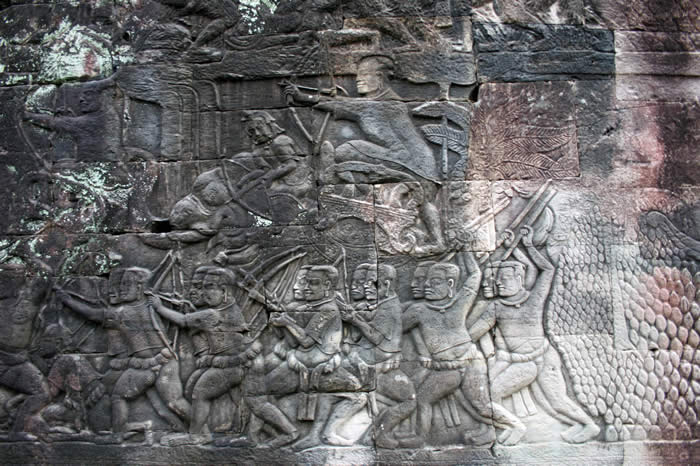 |
Some fine bas reliefs also surround the temple. |
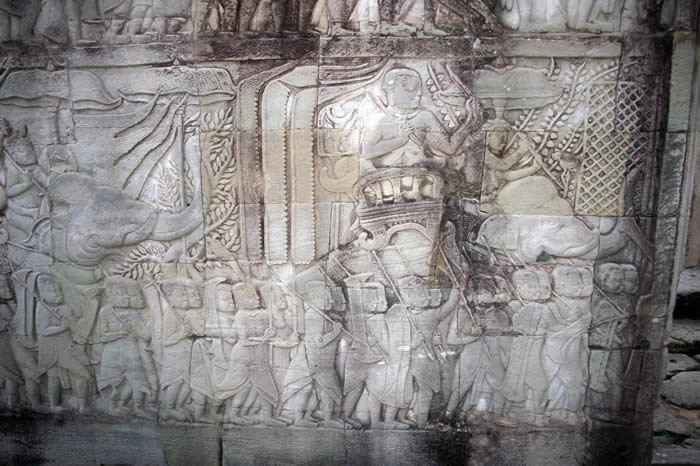 |
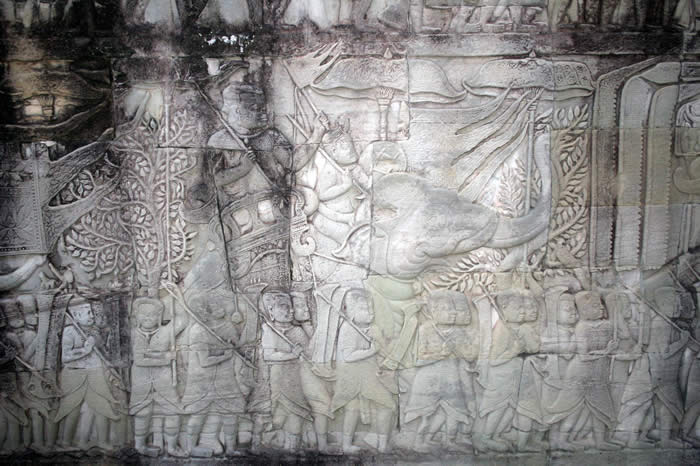 |
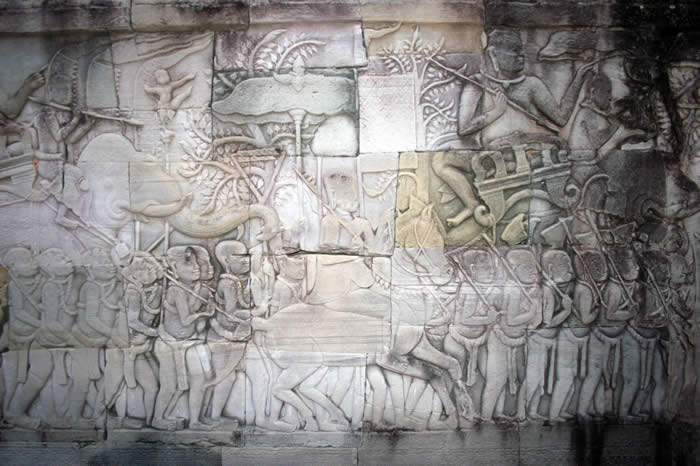 |
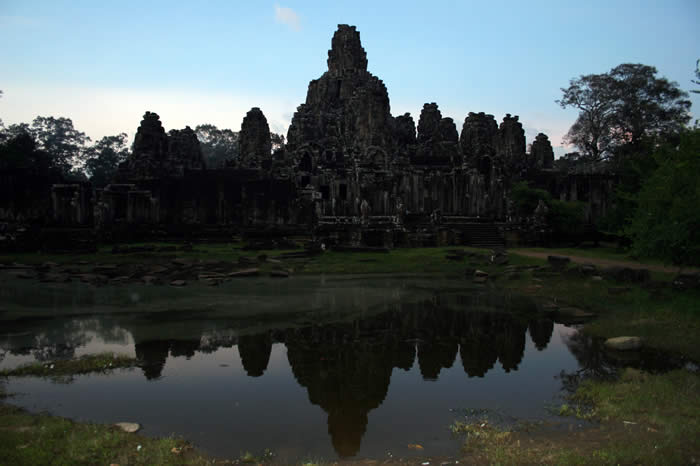 |
Bayon near sunset |
|
Nefersweetie an incidental web space created and supervised by Lee van Laer |
